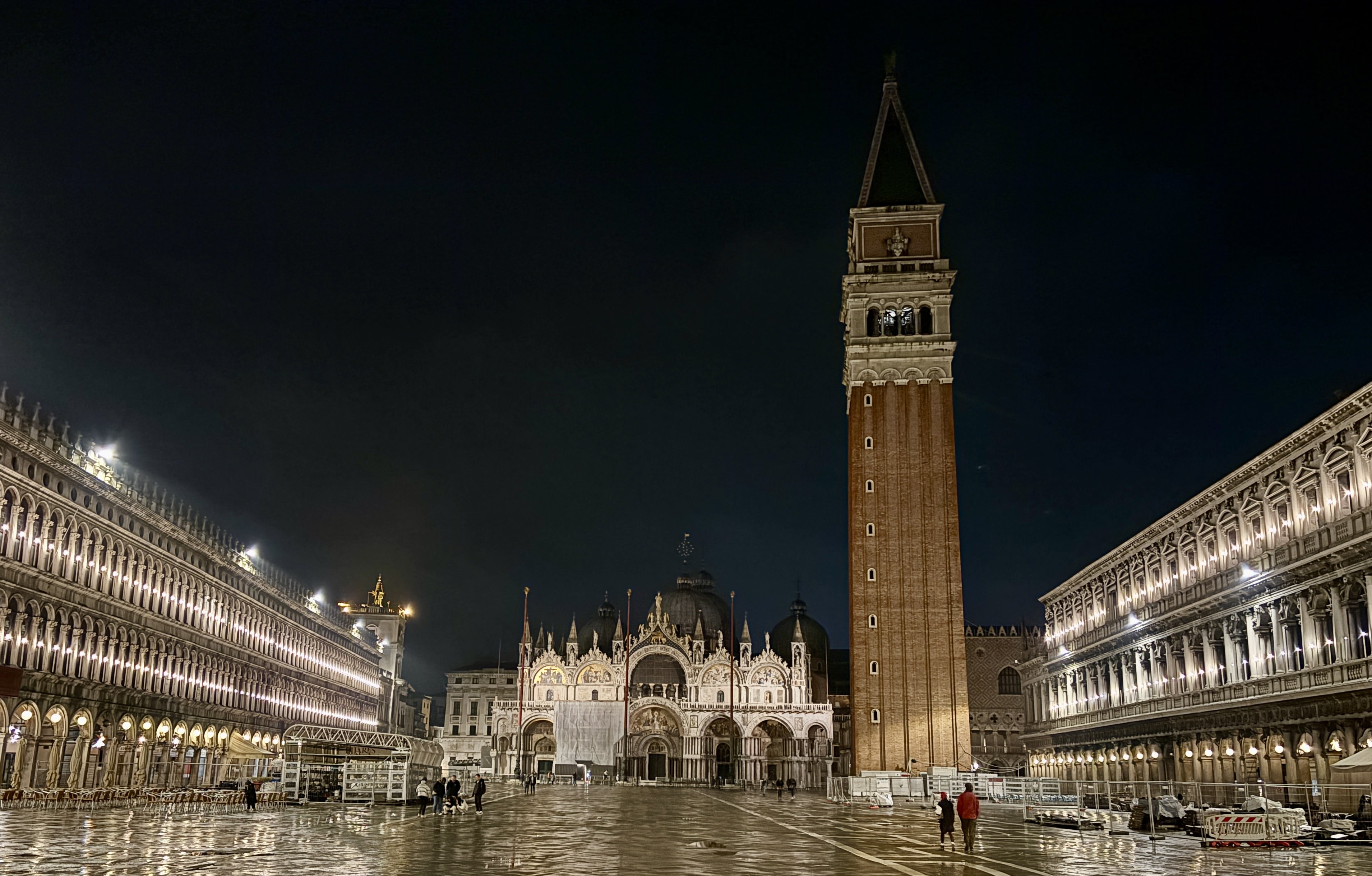
Venice to Vienna by ÖBB Sleeper Train
An affordable, convenient way to maximise your sightseeing time.
Introduction
Night trains are experiencing a welcome renaissance in Europe. New routes are being regularly added, and Austrian operator ÖBB Nightjet is investing in modernising its fleet of couchette and sleeper cars (though this trip would be in an older carriage). Travelling by overnight train can be confusing the first time: what’s included, what to bring, how comfortable will it be. But with a little preparation, night trains are an excellent way to combine the costs of a hotel and train ticket in one, without wasting any vacation time schlepping to and from airports.
Schedule and Tickets
Three direct trains a day link Venice and Vienna: two daytime Railjet services, departing at 09:56 and 15:52, both taking around seven hours and 40 minutes. Tickets for these trains can be had starting at €28.30 when booked in advance (like airlines, ÖBB uses dynamic pricing: tickets get pricier closer to departure, so book as soon as you can).
There is one daily sleeper service, departing Venice at 21:05 and arriving the following morning at 08:19. You can book seats on this service, but this means you get only a seat. For a horizontal bed, you will need to pay either a couchette or sleeper supplement.
Booking about two weeks ahead in the off-season, I paid €54.90 all-in: seat and couchette supplement, including complimentary seat reservation.
Tickets can be booked directly with ÖBB here: https://shop.oebbtickets.at/en/ticket
Which Ticket to Choose?
ÖBB offers a wide array of ticket options, ranging from a normal seat up to a private sleeper. The main choice you will face is between a couchette and sleeper carriage.
Couchettes are the most economical sleeper option. You have the choice of a shared compartment with four or six travellers, including the option for female-only carriages, with four-person compartments costing an extra €15 over the six-person ones. This includes basic bedding and breakfast, and is an entirely comfortable option for solo travellers, groups, or families.
ÖBB overnight trains offer three main categories of ticket: seat, couchette, and sleeper. The level of comfort, as well as the price, increases with each category.
If you are travelling as a large group, it is also possible to reserve an entire couchette compartment to yourself in which case you pay only once for the reservation. Otherwise, you will be sharing with other travellers.
Sleepers are a more comfortable, slightly more expensive option. These are three-bed compartments, and include better bedding and more personal space. Some trains have the option to reserve en suite sleepers, meaning you get your own shower. As with couchette reservations, you can either pay extra to reserve the entire compartment, or opt to share with up to two other passengers.
When reserving, you have the choice of bunk: top, middle, or lower. Lower bunks have the most space and are the only ones accessible to people with mobility impairments; middle/top bunks have a ladder to access. Lower bunks are the most likely to fill up quickly, and you are less likely to get one booking last minute.
Sleeper cabins without an en suite shower have access to shared showers in each wagon, and towels are provided. This isn’t made clear on ÖBB’s website, which says only that sleeper passengers have access to “washing facilities”. I took this to mean an in-cabin sink, which to me was not worth the extra €15 over couchette class. It in fact means access to a shared shower, which is absolutely worth the small upcharge from couchette to sleeper class when booking early (as with everything else, the cost difference between couchette and sleeper cabins increases closer to departure).
Station and Departure
ÖBB trains call at both Venice Santa Lucia and Mestre stations; be sure to pick the one most convenient for you. As I was staying close to Piazza San Marco I opted to start at the train’s origin point, Santa Lucia station. This station is easily reachable by water bus. There are numerous restaurants nearby, none particularly good. Getting to the station half an hour before departure is more than enough time—if you are staying nearby, even ten minutes is enough to navigate the small station.
The ÖBB Nightjet calls at both Venice Santa Lucia, on the Grand Canal and close to major tourist sites, as well as Venice Mestre, on the mainland.
Our platform was posted 20 minutes prior to departure, and the doors opened around 15 minutes beforehand. ÖBB arranges passengers based on origin points, to avoid interrupting your sleep with passengers getting on board in the middle of the night, so expect your compartment to be about as full as it will get when you board.
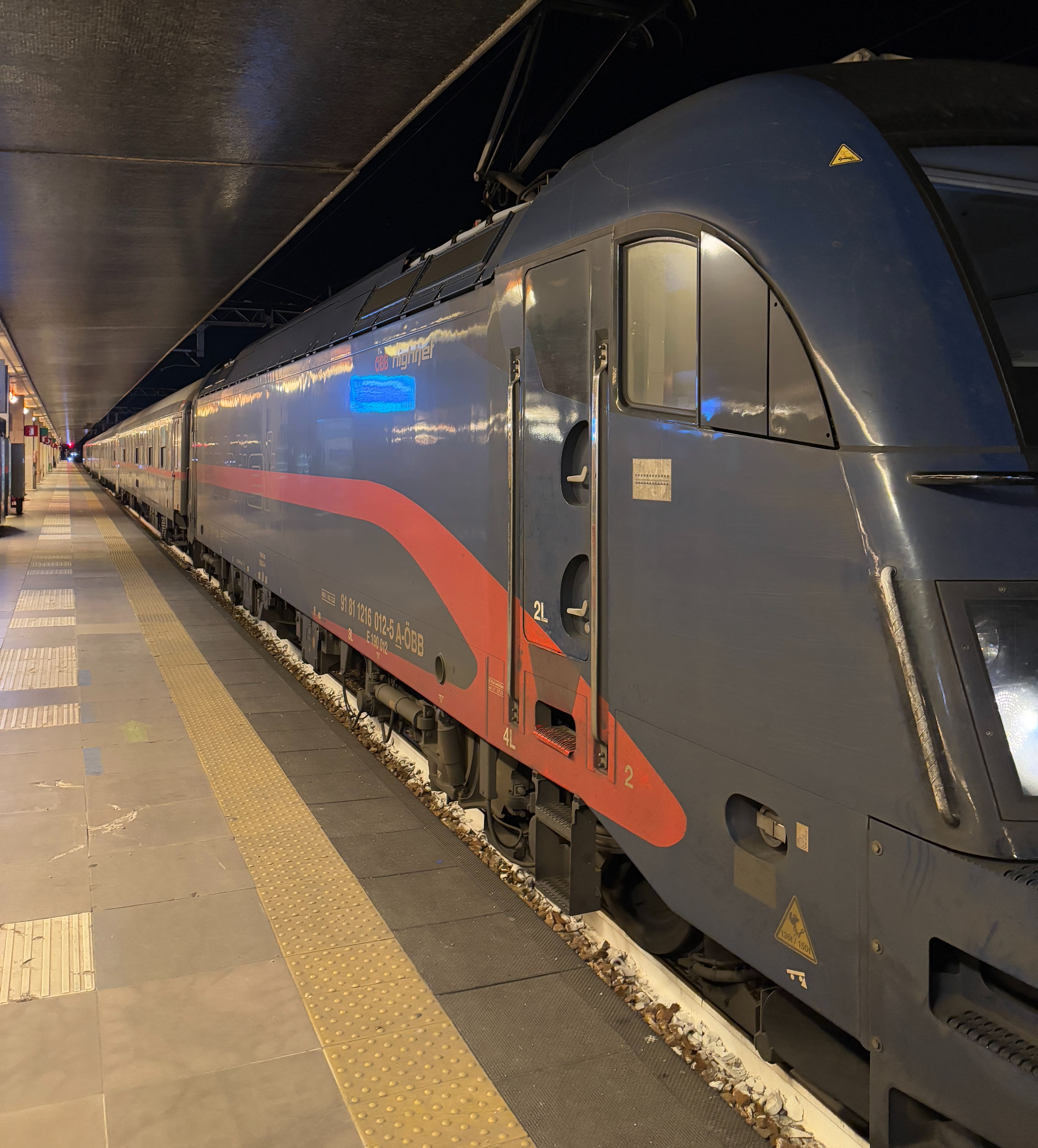
Waiting to depart from Venice Santa Lucia.
Each passenger in couchette class receives a small bottle of water and a packaged wafer. The attendant comes around shortly after departure to verify tickets and ask if you would like coffee or tea with breakfast.
We pulled out of Santa Lucia station seven minutes late.
On Board
Four carriages would be making the trip from Venice to Vienna: one couchette, one sleeper, one second class seater arranged in six-seat compartments, and one second class seater with open-plan 2+2 seating. Missing from this list is a restaurant car, which was a surprise and disappointment—though I expect ÖBB adds one during busier summer services.
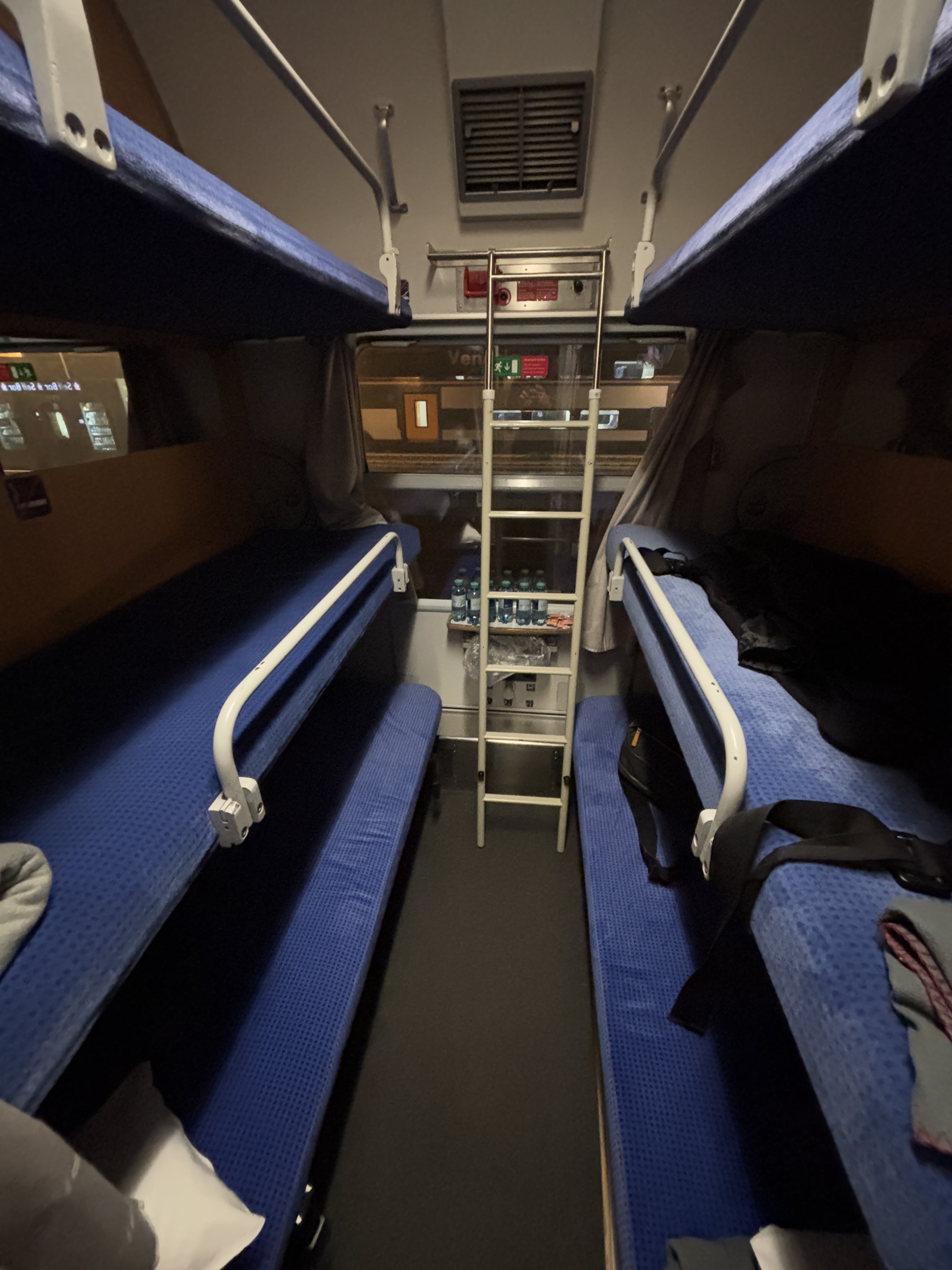
Functional, but a tight fit for six adults. My bunk was to the bottom right.
Each couchette compartment has two power points for up to six passengers, though neither one worked—a thoughtful touch from ÖBB, to make sure passengers don’t have to fight over who gets to wake up with a dead phone. No WiFi is available on older couchette carriages. Each bed has a small pillow, bedsheet, and blanket. In years past the beds used to be made up by an attendant: the bedsheet is designed to fit around the mattress, which is impossible for passengers to do themselves in a tight space. Now though, you just do your best to wrap the sheet around the mattress (or don’t bother, which is what everyone else in my compartment did).
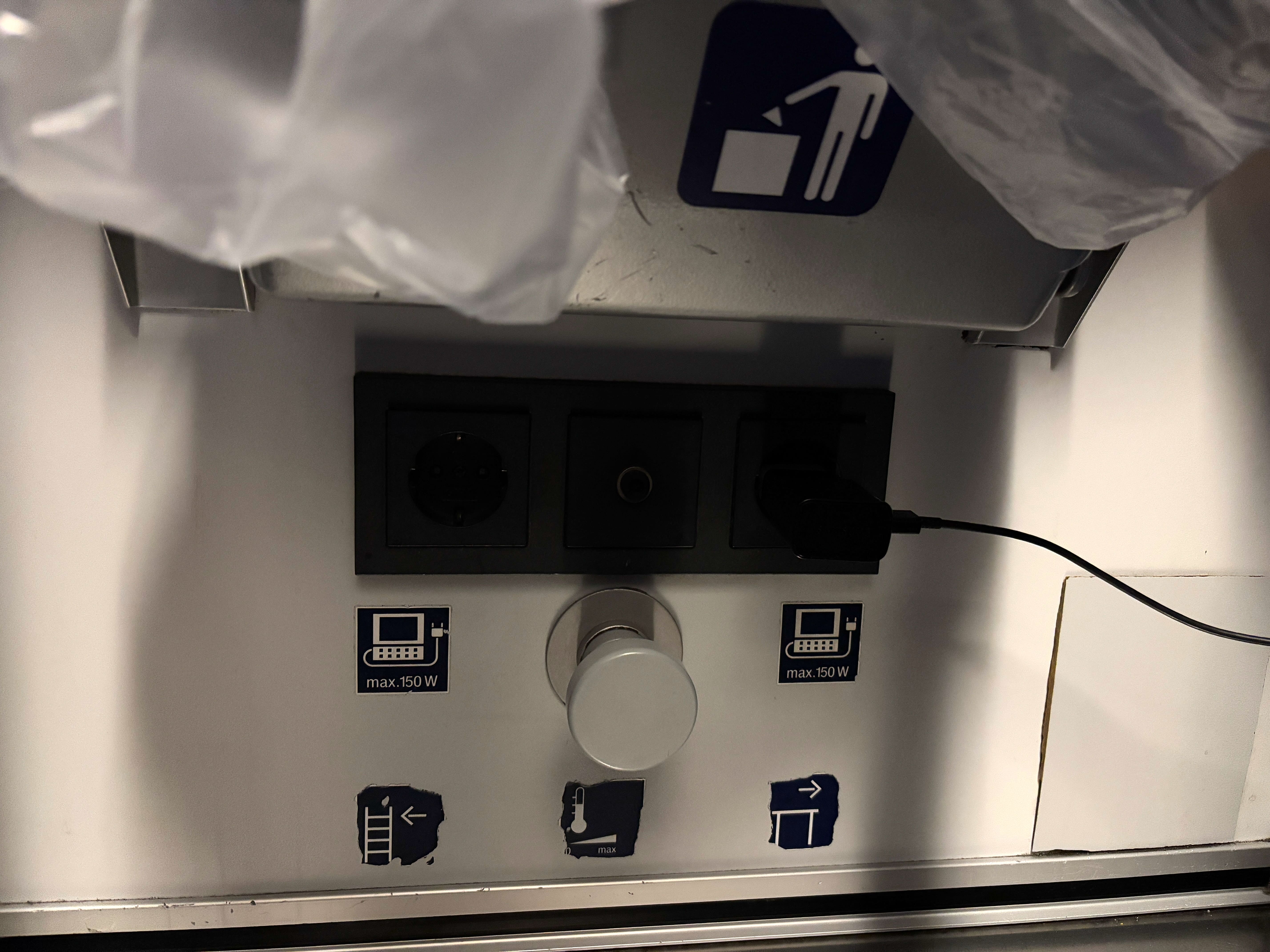
Two round-pronged power points are shared between six passengers...or they would be, if either one worked.
Our couchette wagon had one washroom as well as two washing basins shared between all passengers. The washroom was large enough to change inside comfortably; I recommend bringing pajamas and a change of clothes in an easily-accessible day bag, since you’ll struggle to open large suitcases on board. One of the advantages of sleeper train travel is waking up in the centre of a new city, and being able to explore right away—which is easier if you start the day refreshed.
The beds were all down upon boarding, which made it impossible to sit comfortably with only about half a metre of headspace between the beds. Everyone went straight to bed, though if you would like to rest before sleeping there is a reading light for each passenger. Each bed also has two storage pockets suitable for books, phones, water bottles, the like.
The compartment has a small table, under which you will find a trash bin and the (inoperative) power outlets. Small luggage goes under the bottom bunk, larger bags have to be lifted into a storage area above the door. This is also where you will find the light controls: one switch to light the entire compartment, another to switch to “night mode” which turns off the main light and enables passengers to turn on their reading lights.
Each compartment locks from the inside, and curtains can be drawn to block light from both the corridor and exterior-facing window.
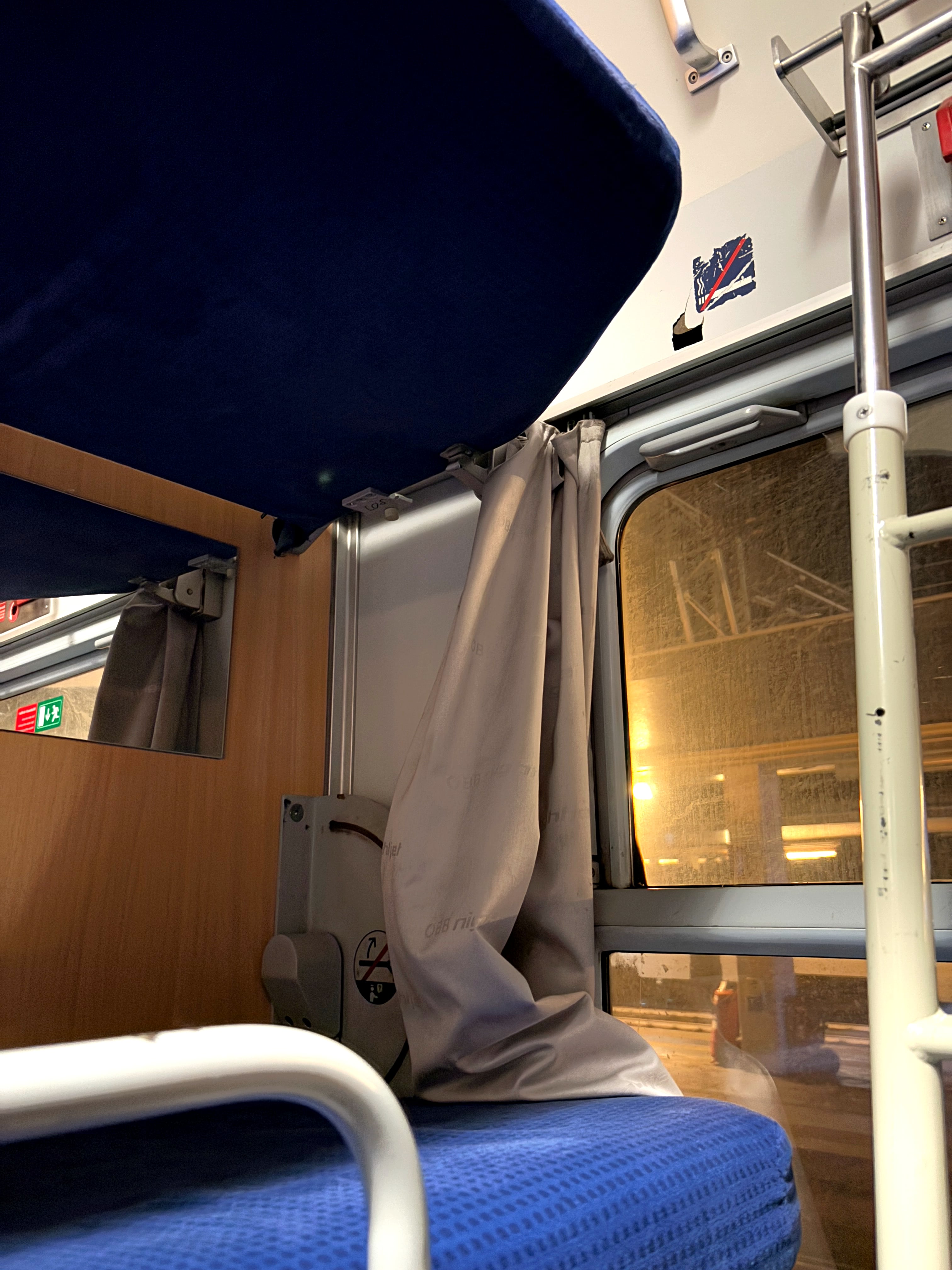
Two small curtains block most of the external light, slightly intruding into the middle bunk.
The bed itself is on the (very) firm side: I found it difficult to get comfortable on such a stiff mattress. It was just barely long enough for me to lie down fully at 6’ 3”, though both my head and feet were touching the walls. Middle and upper bunks have barriers than can be set up to stop passengers rolling out during the night.
The ride itself was relatively smooth, with no stops between 01:00-06:00 during which time I slept fairly comfortably, though did wake up a few times as the train halted at signals. In all I got about seven hours of interrupted sleep.
Our compartment was woken up around an hour before arrival into Vienna by our attendant bringing breakfast: coffee or tea along with two bread rolls with butter and jam. Having woken up moments before being handed two dense pieces of bread, I wasn’t in the mood for such heavy fare but the tea was welcome.
Arrival
After nibbling on my bread for a few minutes, I went to get changed and freshen up. Couchette passengers do not have access to a shower; I brought two towelettes courtesy of a recent flight with Austrian, which did the trick. The water in each washroom is not suitable for brushing teeth or drinking; I brought my own water bottle for the latter, and used the small one provided by ÖBB for the former.

The seating coach on my sleeper train was filled with commuters to Vienna, but here's an identical empty carriage from another trip I took with ÖBB a few days before, to Trieste.
With around 45 minutes to go, I opted to migrate to the open second class seater coach. Since the beds stay down for the entire journey, sitting is much more comfortable in these carriages rather than staying in your couchette compartment. The power outlets also worked here.
Walking up the train, I passed by a few unbooked sleeper cabins, and was made very aware of how bad of a decision it had been not to spend the extra €15 for a shared sleeper over shared couchette: this was one of the newly refurbished sleeper carriages, and the cabins looked very smart indeed.
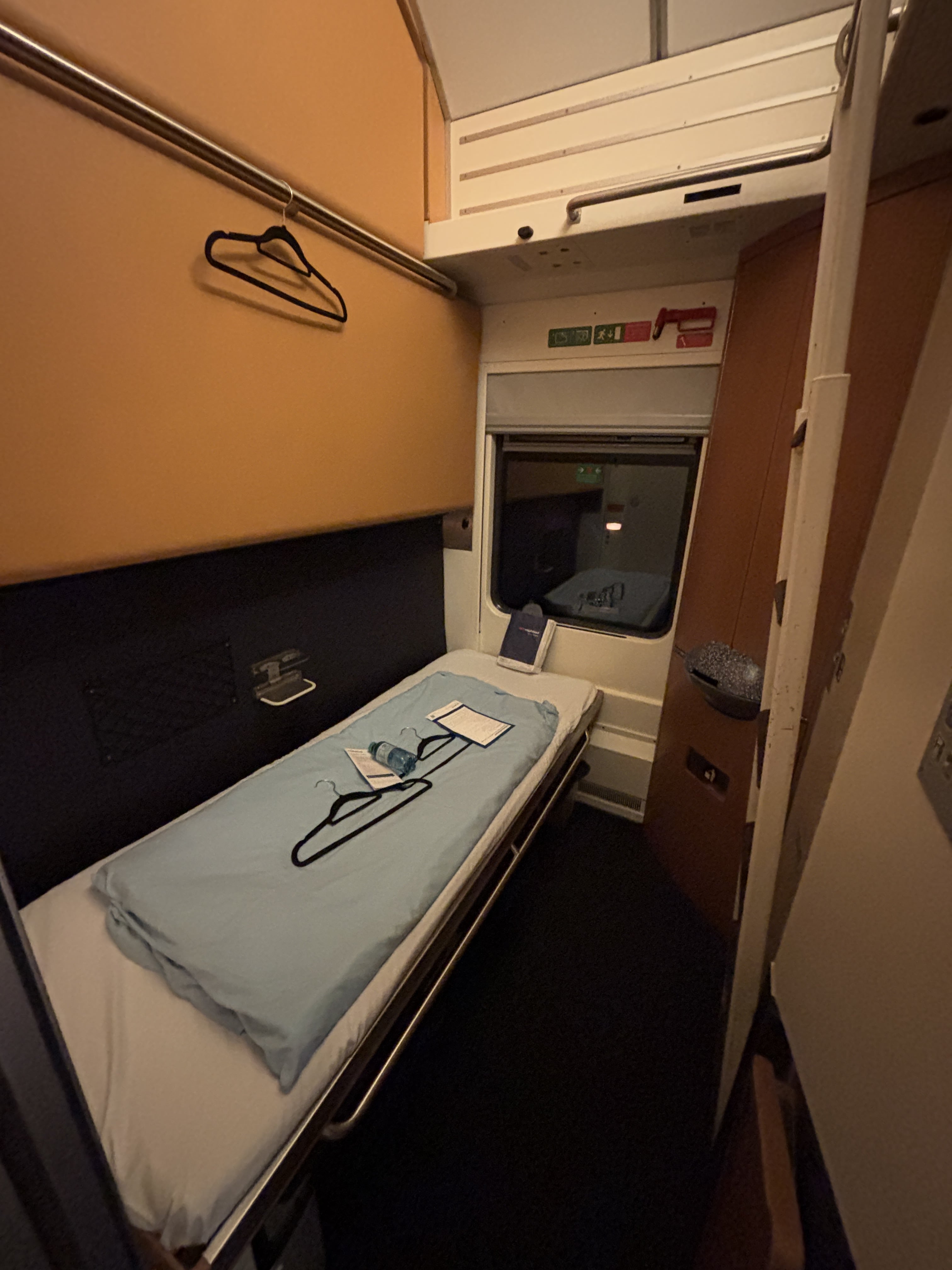
One of the newly-refurbished sleeper cabins. These look well worth the €15 upcharge I could have paid when booking.
The seating carriages were mostly filled with morning commuters making their way to Vienna, as well as four backpackers who spent an uncomfortable overnight journey here.
We pulled into Vienna central station on time to the minute, ten hours and 40 minutes after leaving Venice. The overnight trip is made intentionally longer than daytime trips to allow for a more sociable arrival time.
Final Thoughts
Couchette travel with ÖBB Nightjet was a perfectly comfortable way to cover the distance between Venice and Vienna, though could have been better had everything worked as intended: the lack of WiFi and functional power outlets was disappointing, as was the lack of a restaurant car though this is understandable during the off-season.
Would I do it again? Absolutely—though I’d probably pay the small upcharge for a berth in a sleeper cabin next time.